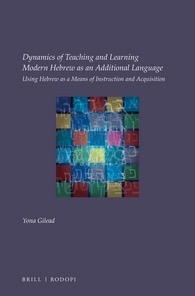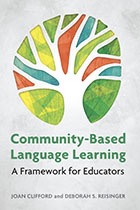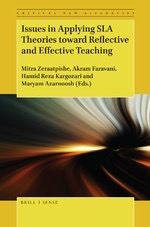second language acquisition
Select an item by clicking its checkbox
Date Reviewed: April 15, 2020
Can we escape political injustice when we learn a language? Most people would say that language and justice issues are separate, but according to this book’s authors, Joan Clifford and Deborah Reisinger, learning another language cannot be completed by simply gaining a linguistic skill in a classroom. They reason that language learners cannot overlook the diverse cultural and social factors of those who live in their own language community. Therefore, the book introduces the importance of local community-based learning for second-language learners (CBLL, as the authors abbreviate) to build a better educational framework.
Specifically, Clifford and Reisinger, US-based language professors, pay attention to the unique experiences of second-language student learners with relation to their local communities in America. As described in Chapter Four, speaking the dominant language in a society gives one access to the society’s dominant culture. For example, in the United States, English holds such a power. The problem is that “not all ways of speaking English are created equal in certain social spaces” (101). On the surface, second-language English speakers seem unimpeded in their access to America’s educational and health services, but actually their different accents and cultures are often undervalued “in the school system which prizes and reproduces dominant (white, English-speaking) culture” (101). That is, for second-language learners, where their living language communities are located, economically, socially, and politically, matters when they try to access America’s dominant cultural group.
Although Clifford and Reisinger focus on the American learning situation and social injustice issues, their audience is not limited to American educators. Rather, by providing a better local community-based learning model, the authors hope that students will critically reflect and challenge problems which are imbued in their social structures. Regarding this, the book is not only useful for learning foreign language but also for other areas such as the missionary context where theological subjects are taught in English or in other languages.
Further, within this emphasis on local communities as a learning partner, for both students and teachers, learning another language allows students to encounter something more than language. That is, it can be a place for the students to experience a “dissonance” between their previous beliefs about their own community’s problems, and those that appear through CBLL conversation. For the teachers as well, this conversation offers a chance to reconsider their cultural privilege and power, and how this might affect their students who come from diverse communities.
Finally, the book means to create “brave spaces” for “genuine dialogue” between learners, educators, and communities by coping with their conflicts or tensions to deeply understand and challenge social injustice issues (140). To do this, the book structures each chapter with reflections for instructors and activities for students to provide a practical framework of CBLL. This book would be valuable for both educators and their students who are considering their communities as important learning partners with relation to their own ecclesial, social, and cultural context.
Date Reviewed: December 10, 2019
Issues in Applying SLA Theories (hereafter Issues) comprises volume seven in the series, Critical New Literacies: The Praxis of English Language Teaching and Learning (PELT).
What is meant by reflective teaching? In their article on writing, Zeraatpishe and Azarnoosh offer the following definition: “Reflection is regarded as a process through which teachers observe their beliefs and practices, assess, restructure their teaching and learning so that they can better situate themselves as agents of change in the immediate contexts of teaching” (165). Effective teaching, in contrast, involves conscious monitoring of student needs and progress, followed by corresponding adjustments in one’s instruction.
Issues is a collection of fourteen essays by a global array of authors. Most hold doctoral degrees, with teaching experience ranging from assistant professors to emeritus professors. Several serve as editors of major publications in the field of Second Language Acquisition.
Part One concentrates on six theories that have influenced language learning pedagogy. Part Two addresses eight skills necessary for learning a language.
Theories explored in Part One include behaviorism, cognitive approaches, constructivism, connectionism, interactionism, and critical theories. Behaviorism’s attention to stimulus and response led to the emphasis on language drills found in the Audio-Lingual Method. Cognitive approaches bring together rationalist and empiricist viewpoints, valuing both Chomsky’s innate Universal Grammar and also the importance of learning through experimentation. Constructivism in language learning involves forming increasingly more complex categories of information by analyzing similar elements, whether individually (cognitive constructivism) or in community (social constructivism). Connectionism draws from the design of digital computers to consider how parallel distributed processing (or artificial neural networks) serve the task of pattern recognition. Interactionism holds that language learners benefit from conversational communication, which involves input, negotiation of meaning, noticing, and second language output. Critical Second Language teaching would value “a listening phase on the part of the course designer or teacher, and… finding out about the learners’ real lives and needs” (70), then creatively adjusting the course correspondingly.
The remaining eight chapters turn from theory to praxis, exploring what it means to teach particular skills in a reflective and effective manner: pronunciation, grammatical competence, vocabulary, idioms, speaking, writing, listening, and reading. For example, instructors are encouraged to journal after class sessions to become attentive to trends in student performance of pronunciation. Grammatical competence can be enhanced by immersive use of illustrated fiction readings, with discussion and open-ended composition assignments. Vocabulary learning will be more effective as students are encouraged to master roughly 2000 words, whether isolated lexemes, word families, or phrasal vocabulary, so that they may produce them in speech and in writing. Idioms will be learned more effectively through a pragmatic approach that is attentive to context and the speaker’s aims. Speaking will improve as instructors facilitate conversation that is incremental and attentive to stages of students’ proficiency. Writing instruction can be segmented into eight discreet stages. And listening comprehension improves as students appreciate and attend to specific processes at work during periods of concentrated listening. Reading fluency, defined as the ability to read “effortlessly and confidently at a level of understanding and a rate appropriate for the purpose or task and the material” (Day, 203), requires automatic recognition of words which results from students having read large quantities of easy and interesting material.
Instructors of English as a Foreign Language comprise the principal audience for Issues. Those who, like the reviewer, teach a classical language will benefit primarily from R. R. Day’s insights concerning literacy (199–208), and also from Nurmukhamedov and Plonsky’s essay on vocabulary (115–26).

Dynamics of Teaching and Learning Modern Hebrew as an Additional Language: Using Hebrew as a Means of Instruction and Acquisition
Date Reviewed: November 2, 2018
This book examines the use of Hebrew as the primary means of instruction for second or additional language (L2) acquisition at an introductory level in academic contexts where English is the native language. The author, Yona Gilead, seeks to address the relative dearth of theorization on the dynamics of using Hebrew as the primary language for THAL (teaching Hebrew as an additional language) in order to begin to situate it within a larger framework of L2 teaching, learning, and research. Dynamics of Teaching and Learning Modern Hebrew as an Additional Language provides a presentation and analysis of the pedagogy promulgated by the Hebrew University’s Rothberg International School (RIS) adapted for use at an Australian university. In looking at the implementation of the RIS method outside of Israel the book focuses on the adaptability of the Hebrew-in-Hebrew approach for localized use.
In contradistinction to teaching Hebrew from a heritage language perspective, where grammar and literacy are emphasized and the ability to read and analyze culturally important texts such as the Bible, Mishnah, and Talmud are the primary goals of instruction, the RIS method that Gilead evaluates focuses on spoken, workaday Hebrew where the goals are comprehension of aurally received data and generation of intelligible responses. The latter approach, referred to in some broader L2 discussions as the Direct Method, dispenses with grammar altogether, prompting students to learn grammar inductively as a natural consequence of language acquisition. Gilead provides a brief historical background of the RIS method, situating it in its current context amid a larger L2 field, and discusses what is achievable using the RIS method at the introductory level outside of Israel. The major modification of this method for the Australian classroom is the teacher’s prerogative to break, fleetingly, from Hebrew in order to provide a concise grammatical explanation. Certainly Gilead’s analysis, which includes interviews with the participants (students and teacher, independently), shows that the students found that the addition of this allowance was a boon to their understanding; many of the students she interviewed comment that that it was essential to have these breaks for grammar.
Gilead is quite positive about the effectiveness of the technique but does not go into great detail to this end. There is definitely room for discussion, perhaps in a future publication, of how students perform in more advanced levels of instruction. Do students approach literacy while in formal classroom contexts? How does this method serve its students when they are no longer in a structured environment? Does the method prepare them to be life-long learners? Are students able to navigate resources that will allow them to continue learning, especially if they are not in an immersive environment once the class ends?
Overall, the book’s methodology, which includes dialogue, interview, and case study is clear and implemented well. This study raises important pedagogical issues for university Hebrew programs reassessing their curriculum goals and needs. Gilead makes a solid contribution in identifying and theorizing key aspects of THAL classroom dynamics.
Two German Language Instructors discuss their collaborations via the GLAA program. Source.

